Riva 1920’s Briccole Project
If you’re like me, your only link to the word “briccole” is the Bavarian-themed cough drop whose sonorous name is shouted across the vale by many an intrepid Swiss mountaineer. But “briccole” is Italian, so the connection is thin at best. In fact, Ricola’s only line to A&D may be that the company’s home turf is in Laufen, very near Basel, where, come June, Riva 1920’s transmogrifications and re-interpretations of “Le Briccole de Venezia” may take center stage. The product series requires a bit of historical context. The briccole (“briccola” is the singular) are the submerged wooden piers that created safe waterways in old Venice—“a group of piles used to mark the navigable channels through the lagoon.” Riva 1920’s Briccole Project involves adaptive re-use of these impressive artifacts, thus spurring some of the world’s most famed designers on to creative invention via constraint.
Sofa “‘Forkola”. Designed by Karim Rashid for Riva 1920.
From Lagoon to Living Room
Riva 1920 refers to the Briccole Project with characteristic understatement: “the purpose is of creating some products by using this natural material and by making use of the co-operation of designers and architects of world wide renown.” That’s putting it pretty mildly for a collection that brings together formidable talents like Antonio Citterio, Matteo Thun, and Karim Rashid, each of whom has taken the weather and sea-worm bitten beaten beauty of this aged wood to devise a signature piece. Citterio’s Room Divider is clean and functional, yet manages to highlight the ravaged portion of the salvaged wood. Thun’s Table is a grand, gorgeous slab of planed wood with an unusual and unusually large gaping fork at one end, very like a serpent’s tongue. And Rashid’s “Forkola” Sofa perserves some of the curves of vintage Rashid, yet integrates this aesthetic (literally and metaphorically) by employing the briccola as a straight and rigid crosspiece.
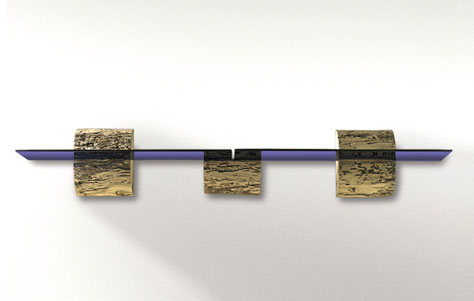
Shelf “Bricolle A Murano”. Designed by Luisa Castiglioni for Riva 1920.
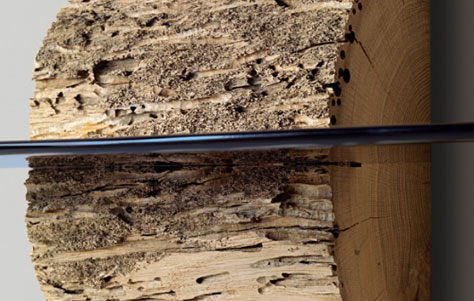
Shelf “Bricolle A Murano”. Designed by Luisa Castiglioni for Riva 1920.
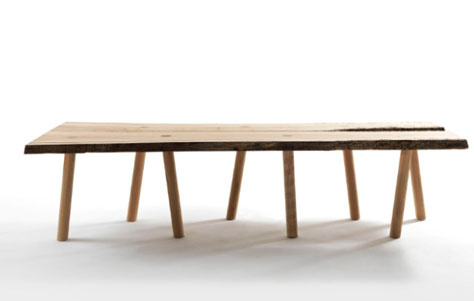
Table “Bricolle Venezia”. Designed by Matteo Thun for Riva 1920.
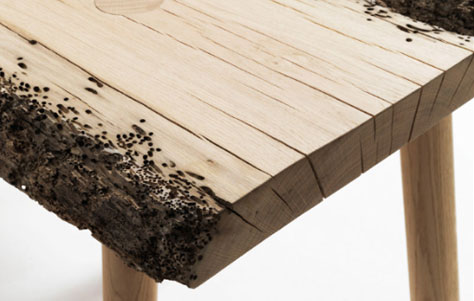
Table “Bricolle Venezia”. Designed by Matteo Thun for Riva 1920.
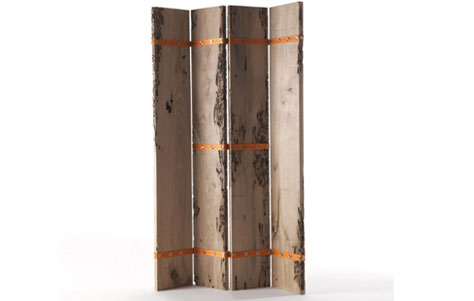
Room Divider. Designed by Antonio Citterio for Riva 1920.
Each of the aforementioned pieces rates rather high on the wow scale, but for my money the showstopper is Luisa Castiglioni’s Briccole A Murano, a shelf that unites two of the iconic artifacts of Venice: the briccole and Murano glass. Castiglioni’s design plays with the look of the briccole in their original state; that is to say, almost entirely submerged by the Venice waters. The play between the briccole half rounds and the knife-thin sheet of colored glass evokes the Venice of yore, when the smooth pane of crystalline acqua was cut into clean sheathes by the insistent presence of the briccole. Or, as Castiglioni says, “three strange white wooden posts protrude from the water, leaning one against the other as they have done for nearly five hundred years, to signal to Venetians where their boats can safely travel.”

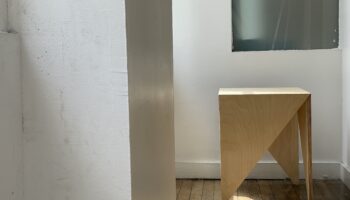
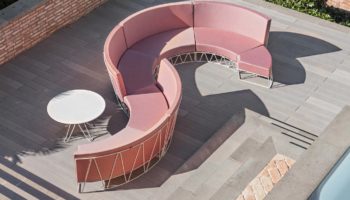

Leave a Reply